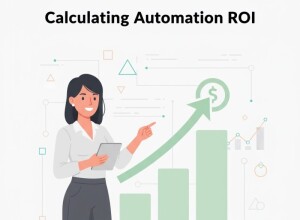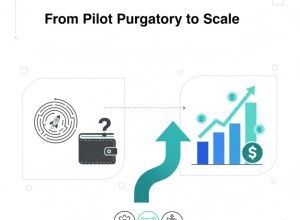The Practical Digital Twin: What to Model, What to Ignore
“Digital Twin” can mean anything from a lightweight data model to a high-fidelity physics simulation. In manufacturing, a practical digital twin is a fit-for-purpose virtual representation of an asset or process that stays synchronized with reality to support decisions across design, commissioning, and operations. The challenge is not building a perfect mirror—it’s deciding what to model, how accurate it must be, and what to ignore so the twin delivers outcomes without stalling in endless detail.
Why Twins Fail (and How to Avoid It)
- Boiling the ocean: Modeling every bolt and vortex invites delays and scope creep.
- Dead-on-arrival data: A twin without live tags, reliable timestamps, and versioned configurations becomes a static animation.
- Unclear decisions: If you cannot name the decision that the twin will accelerate or de-risk, stop and redefine the scope.
Successful programs start with a decision catalogue (e.g., “balance a new line tact time,” “validate PLC logic before startup,” “cut changeover by 20%”) and size the twin to those decisions.
The Fidelity Ladder: Choose the Lowest Rung That Works
Model fidelity should match the decision horizon. Use this ladder as a guide:
- Tag Twin (Data Twin): Asset registry with names, limits, units, and relationships; no geometry. Best for PdM and KPI tracking.
- Logical Twin: States, recipes, interlocks, event logic, and discrete-event flows. Ideal for throughput/OEE studies and scheduling.
- Kinematic Twin: 3D geometry + motion, reach, and collisions. Supports safety/ergonomics and robot feasibility.
- Physics Twin: Multi-body dynamics, CFD/thermal, and detailed energy models. Use only when the decision hinges on physics (e.g., oven uniformity, airflow, web tension).
Start at the lowest rung that answers the question; only climb when residual risk justifies extra model effort.
What to Model (by Use Case)
- Throughput and buffering: Model cycle times, transport delays, changeovers, and downtime distributions. Geometry is optional; accurate variability is essential.
- Virtual commissioning: Model I/O points, PLC tags, safety states, and robot/cell kinematics. Use hardware-in-the-loop (HIL) where risk or cycle time is tight.
- PdM & energy: Model asset hierarchies, operating regimes, and physics-informed limits. Tie to historian data and edge analytics (see Predictive Maintenance 2025).
- Layout changes & ergonomics: Model reach envelopes, clearances, and safety zones. High-detail CAD textures add little value—skip them.
What to Ignore (on Purpose)
- Decorative CAD detail: Fasteners, fillets, and branding add render time, not insight.
- Unmeasured micro-physics: If you cannot calibrate it with plant data, keep the model parametric and conservative.
- Perfect networks: Assume realistic latencies and jitter—or decouple timing from WAN entirely when evaluating controls behavior.
- Every corner case at once: Design experiment sets. Model the top few that drive the bulk of risk/variance.
Synchronization: How “Live” Must a Twin Be?
Twins range from offline scenario tools to sub-second synchronized systems. Pick a sync mode that fits:
- Batch-sync (minutes–hours): For planning, energy and OEE studies. Cheap to run; easy to govern.
- Near-real-time (seconds): For dashboards, changeover guidance, and advisory controls.
- Real-time (sub-second): Reserved for HIL/PLC testing and robotics where timing matters.
Transport should use open information models; OPC UA over TSN supports deterministic exchange when the twin sits close to the line.
Data Backbone: Historian to Twin
A practical twin leans on proven time-series infrastructure, not ad-hoc files. Stream plant tags from the historian into the twin’s feature layer with consistent units and timestamps. For sites with edge analytics, follow the same governance used in MLOps for OT: version the feature pipelines, record model/twin versions with each scenario, and keep an audit trail.
Verification & Validation: Trust Before Fancy
- Verification (did we build it right?): Unit tests for logic blocks; collision tests for kinematics; solver stability checks.
- Validation (did we build the right thing?): Back-test against historian data—throughput, WIP, energy, temperature profiles. Declare acceptable error bands upfront (e.g., throughput ±5%, energy ±8%).
Lock a calibration set of plant data and a separate validation set to avoid fitting to noise.
People and Process: Who Owns the Twin?
Twins live at the intersection of OT, engineering, and IT. A lightweight RACI keeps them healthy:
- Process/Industrial Engineering: Owns scope, KPIs, and acceptance criteria.
- Controls/OT: Owns I/O mapping, PLC/robot integration, safety logic, and time sync.
- Data/IT: Owns historian feeds, identity/permissions, compute budget, and change control.
Treat twin versions like software releases: semantic versioning, signed artifacts, release notes, and rollback plans.
Reference Architecture
- Edge layer: Gateways collect tags, timestamps, and events; optional on-edge preprocessing.
- Data layer: Historian/TSDB + feature registry with units, limits, and quality flags.
- Twin engine: Discrete-event/kinematic/physics simulators selected per use case; containerized.
- Orchestrator: Scenario manager, parameter sweeps, and batch jobs.
- Interfaces: OPC UA information model for tags; CSV/Parquet for offline studies; APIs for MES/CMMS.
Fast Path to Value (60–90 Days)
- Week 1–2: Define decision catalogue and KPIs. Choose the lowest fidelity that can answer them.
- Week 3–6: Build a logical twin of the target line; connect to historian; calibrate with two clean weeks of data.
- Week 7–10: Run scenarios (new shift plan, buffer sizes, changeover policy). Document ROI and residual risks.
- Optional: Add kinematics/HIL only where commissioning risk or safety requires it.
Anti-Patterns to Avoid
- “We’ll import all CAD and figure it out later.” Start with primitives and add geometry selectively.
- “The twin will replace the historian.” Twins depend on governed time-series data—do not duplicate it.
- “Real-time or nothing.” Most business decisions are fine with near-real-time or batch updates.
Lightweight Q&A
How accurate is accurate enough?
Define KPI-specific error bands. For throughput/OEE, ±5% is typically sufficient. For collision checks, millimeter-level kinematics are necessary.
Can a twin help with PdM?
Yes—the tag twin maps asset context and duty cycles; physics/kinematics help estimate loads. Feed these into PdM models to reduce false alarms and improve lead time.
What about licensing and compute?
Run heavy physics in batch jobs; keep the operational twin lightweight. Containerize engines to schedule cost-efficient bursts instead of always-on compute.
Related Articles
- Predictive Maintenance in 2025: Sensors, Signals, and Real ROI
- MLOps for OT: Versioning, Drift, and Model Monitoring on the Edge
- OPC UA over TSN Explained: Determinism Without Vendor Lock-In
Conclusion
A practical digital twin is not a mirror of reality—it’s a deliberately incomplete model aligned to decisions and fed by reliable plant data. Start with the lowest fidelity that works, validate against the historian, and evolve only where risk or ROI justifies it. Done this way, the twin becomes a daily tool that speeds projects, de-risks startups, and turns time-series data into sustained business impact.









































Interested? Submit your enquiry using the form below:
Only available for registered users. Sign In to your account or register here.